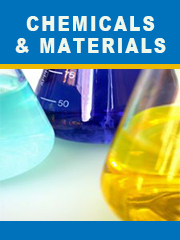The global Natural Food Preservatives market was valued at US$ 698.4 million in 2022 and is projected to reach US$ 802.7 million by 2035, at a CAGR of 2.0% during the forecast period. The influence of COVID-19 and the Russia-Ukraine War were considered while estimating market sizes.
Natural food preservation refers to the application of naturally produced antimicrobial compounds that are obtained from plants, animals, and microbes to prevent food spoilage microorganisms, and the proliferation and growth of food-borne pathogens in food and food products.
This report aims to provide a comprehensive presentation of the global market for Natural Food Preservatives, with both quantitative and qualitative analysis, to help readers develop business/growth strategies, assess the market competitive situation, analyze their position in the current marketplace, and make informed business decisions regarding Natural Food Preservatives. This report contains market size and forecasts of Natural Food Preservatives in global, including the following market information:
Global Natural Food Preservatives Market Revenue, 2018-2023, 2024-2035, ($ millions)
Global Natural Food Preservatives Market Sales, 2018-2023, 2024-2035, (K MT)
Global top five Natural Food Preservatives companies in 2022 (%)
Food preservation techniques are developed to improve microbial quality and safety without causing nutritional and organoleptic losses. Therefore, the application of natural compounds from traditional medicinal plants as natural food preservatives are gaining great interest in the food industry, due to the potential to provide quality and safety benefits, with reduced impact on human health. Natural food preservatives are gaining interest among food technologists for their use as alternatives to physical- and chemical-based antimicrobial treatments. Natural food preservatives are safer and dont have adverse effect on human health.
We surveyed the Natural Food Preservatives manufacturers, suppliers, distributors and industry experts on this industry, involving the sales, revenue, demand, price change, product type, recent development and plan, industry trends, drivers, challenges, obstacles, and potential risks.
Total Market by Segment:
Global Natural Food Preservatives Market, by Type, 2018-2023, 2024-2035 ($ Millions) & (K MT)
Global Natural Food Preservatives Market Segment Percentages, by Type, 2022 (%)
Global Natural Food Preservatives Market, by Application, 2018-2023, 2024-2035 ($ Millions) & (K MT)
Global Natural Food Preservatives Market Segment Percentages, by Application, 2022 (%)
- Bakery
- Beverages
- Confectionery
- Dairy Products
- Meat, Poultry and Seafood
- Others
Global Natural Food Preservatives Market, By Region and Country, 2018-2023, 2024-2035 ($ Millions) & (K MT)
Global Natural Food Preservatives Market Segment Percentages, By Region and Country, 2022 (%)
- North America (United States, Canada, Mexico)
- Europe (Germany, France, United Kingdom, Italy, Spain, Rest of Europe)
- Asia-Pacific (China, India, Japan, South Korea, Australia, Rest of APAC)
- The Middle East and Africa (Middle East, Africa)
- South and Central America (Brazil, Argentina, Rest of SCA)
Competitor Analysis
The report also provides analysis of leading market participants including:
- Key companies Natural Food Preservatives revenues in global market, 2018-2023 (Estimated), ($ millions)
- Key companies Natural Food Preservatives revenues share in global market, 2022 (%)
- Key companies Natural Food Preservatives sales in global market, 2018-2023 (Estimated), (K MT)
- Key companies Natural Food Preservatives sales share in global market, 2022 (%)
Further, the report presents profiles of competitors in the market, key players include:
- Koninklijke DSM
- DowDuPont
- Chr. Hansen
- Kemin Industries
- ADM
- Kerry Group
- BASF
- Celanese
- Akzonobel
- Naturex
- Dumoco
- Chihon Biotechnology
- Zhengzhou Bainafo Bioengineering
Outline of Major Chapters:
Chapter 1: Introduces the definition of Natural Food Preservatives, market overview.
Chapter 2: Global Natural Food Preservatives market size in revenue and volume.
Chapter 3: Detailed analysis of Natural Food Preservatives manufacturers competitive landscape, price, sales and revenue market share, latest development plan, merger, and acquisition information, etc.
Chapter 4: Provides the analysis of various market segments by type, covering the market size and development potential of each market segment, to help readers find the blue ocean market in different market segments.
Chapter 5: Provides the analysis of various market segments by application, covering the market size and development potential of each market segment, to help readers find the blue ocean market in different downstream markets.
Chapter 6: Sales of Natural Food Preservatives in regional level and country level. It provides a quantitative analysis of the market size and development potential of each region and its main countries and introduces the market development, future development prospects, market space of each country in the world.
Chapter 7: Provides profiles of key players, introducing the basic situation of the main companies in the market in detail, including product sales, revenue, price, gross margin, product introduction, recent development, etc.
Chapter 8: Global Natural Food Preservatives capacity by region & country.
Chapter 9: Introduces the market dynamics, latest developments of the market, the driving factors and restrictive factors of the market, the challenges and risks faced by manufacturers in the industry, and the analysis of relevant policies in the industry.
Chapter 10: Analysis of industrial chain, including the upstream and downstream of the industry.
Chapter 11: The main points and conclusions of the report.
